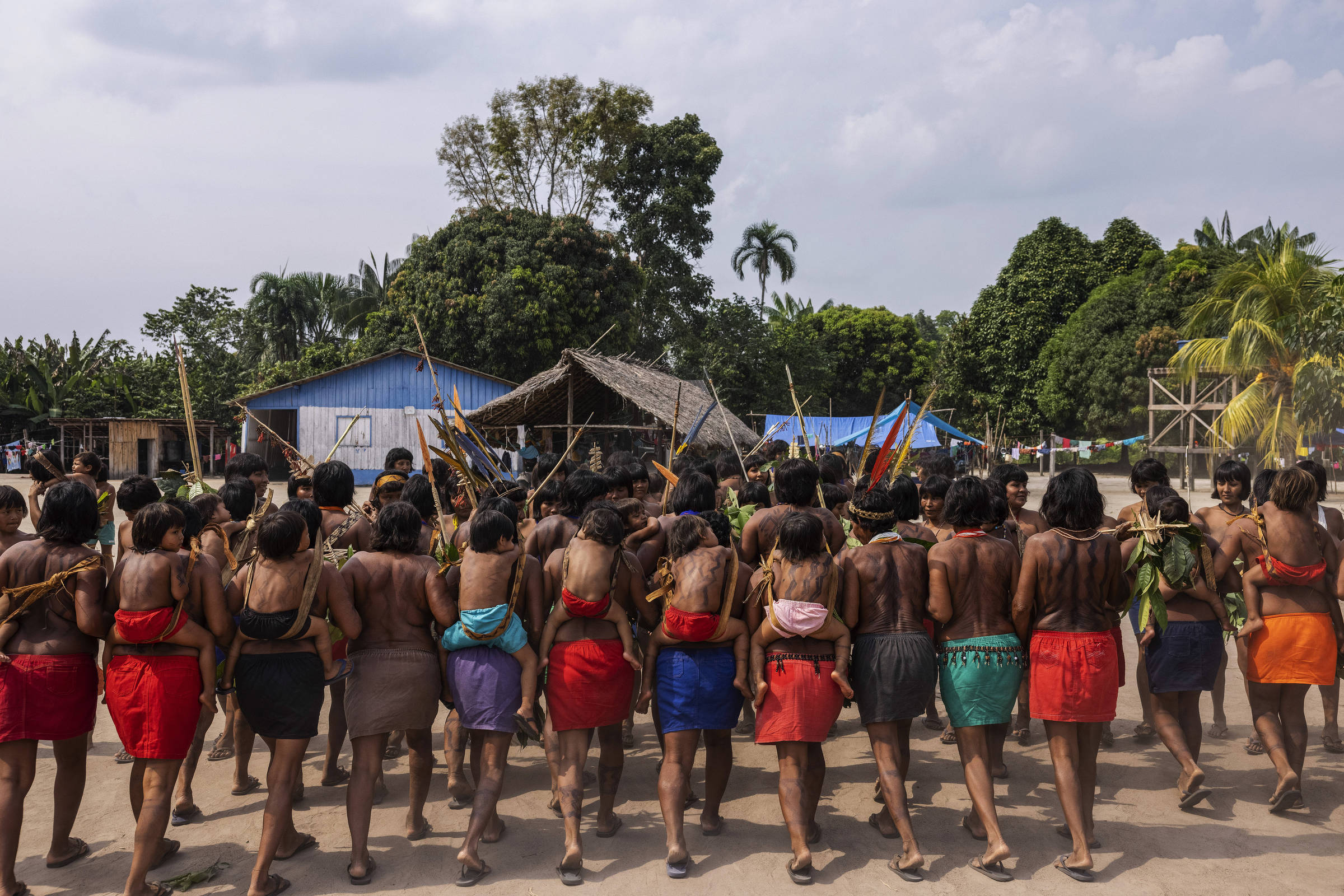
In the de jure Amazon, approximately 2.3 million people lived in areas of protected areas as of 2022, in addition to 428,100 inhabitants of indigenous lands and 91,800 inhabitants of the officially demarcated Quilombola region.
This is pointed out in a publication by IBGE (Brazilian Institute of Geography and Statistics), which analyzed data from the 2022 Population Census released earlier.
The release will take place this Wednesday (12th) in conjunction with COP30 (United Nations Conference on Climate Change) being held in Belem.
Proportionally, the legal Amazon concentrated 19.2% of Brazil’s total population living in protected areas (11.8 million people) in 2022.
They also account for 62.1% of the population of indigenous lands (689.5 thousand people) and 45.1% of the inhabitants of the Quilombola region of the country (203.6 thousand people).
Conservation units, indigenous lands, and quilombola territories are considered protected areas. These are spaces aimed at protecting ecosystems and the rights of traditional peoples and communities.
IBGE counted 1,053 protected areas within the statutory Amazon. Excluding overlap, it accounted for 46.6% of the region’s total territory and 27.5% of Brazil. According to the institute, the entire legal Amazon covers more than half of Brazil’s territory.
However, authorities did not reveal the total population of protected areas in the area. According to IBGE, removing overlapping people requires more complex work.
For example, the same person can live in a protected unit that is also considered indigenous land or quilombola territory.
The legal Amazon consists of nine states: Acre, Amazonas, Roraima, Amapá, Pará, Rondonia, Tocantins, Mato Grosso, and parts of Maranhão.
What is a conservation unit?
Reserved areas with larger populations are areas established by public authorities and protected by law. These are divided into two management types: full protection and sustainable use.
In highly protected areas, human occupancy is more restricted. These include ecological stations, biological reserves, parks, natural monuments, and wildlife sanctuaries.
The purpose is nature conservation, and only indirect use of natural resources is permitted, except as required by law.
Sustainable use sites aim to balance nature conservation and partial use of resources. These include APAs (environmentally sensitive areas) where people are allowed to live in a regulated manner.
Other examples of sustainable use include forests, mining reserves, and animal sanctuaries.
APAS has a larger population
The world’s most populous category of protected units is the APA, with 2.1 million people in the statutory Amazon in 2022. This corresponds to 90.9% of the total population (2.3 million people) found in protected units in the region.
Mining reserves then emerged, with a population of about 105,000 people.
Considering the five categories studied (ecological stations, biological reserves, parks, natural monuments, and wildlife reserves), the statutory Amazon strict protection units totaled 56.8 thousand inhabitants.
Although fully protected sites are more restrictive, the census does not provide details on whether residents were in informal or regular status. IBGE says this is not its responsibility.
“This law recognizes, through action agreements and management plans, the presence of some groups in places where theoretically they should not exist. We cannot say that everyone in the park is irregular,” said Marta Antunes, IBGE’s traditional peoples and communities manager.
To illustrate this situation, she gave the example of Pico da Neblina National Park, which overlaps with the lands of the Yanomami indigenous peoples. “The Yanomami are there,” he said.
Indigenous Lands and Klong Bora Territory
Of the population of the de jure Amazonian indigenous lands (428,100 people), 94.3% were declared indigenous. The remainder (5.7%) were non-Indigenous.
Of the population of Quilombola Territory in this region (91.8 thousand people), 88.5% of the residents had declared Quilombola. The remaining 11.5% were non-quilombora.



